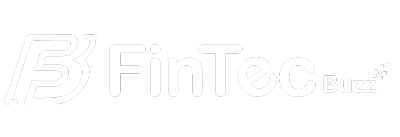The discourse regarding blockchain and Distributed Ledger Technology (DLT) has changed significantly. From just being an oxon in the realm of cryptocurrencies, the term has now emerged as one of the crucial components of industrial evolution that is changing how organizations function. Given how industries are looking forward to the decentralized model, we can affirm that it is not hype but a revolution.
Table of Contents
1. Why Decentralization Is the Future
2. Breaking the Silos
2.1 Supply Chain and Logistics
2.2 Healthcare Gets Smarter
2.3 Finance Reinvented
3. Addressing Barriers and Concerns
3.1 The Scalability Puzzle
3.2 Navigating Regulation
3.3 Privacy vs. Transparency
4. Trends to Watch
4.1 Tokenization Takes Center Stage
4.2 DAOs Redefine Governance
4.3 Blockchain for Sustainability
1. Why Decentralization Is the Future
In a nutshell, decentralization is just a process of opening up power and control. Blockchain and distributed ledger solutions provide a level of transparency, effectiveness, and reliability in today’s business that was unheard of before. Yet as much as decentralization opens the field for everyone, it questions the existing foundations.
For instance, let us discuss one of the values that has caused significant changes: transparency. As in supply chain management, where every stage is transparent to stakeholders, thereby reducing chances of fraud, blockchain has come in to enhance accountability.
But transparency raises a question: Is paying attention to operational information always effective, or can it even expose weaknesses?
The other side of the coin is efficiency. As much as it is easy to agree with the benefits that come with having efficient business operations in terms of work production, this side of the argument is true as well. Decentralized systems do away with intermediaries, integrate several procedures, and considerable time wastage is averted. Still, they also take the power from the center and put it into the hands of the decentralized people. The complexity arises from establishing the right compromises between speed and control—an aspect that every industry faces as it asks for blockchain architecture.
2. Breaking the Silos
Decentralized technologies are not only about potential—they are already providing us with notable results. Every industry is undergoing change, and these changes revolve around the blockchain networks.
2.1 Supply Chain and Logistics
Just think how it would be if you could follow the product from the manufacturer through transport and delivery straight to the customer’s door. That is achieved by industries such as logistics using blockchain. Smart contracts also help to eliminate or minimize the time taken before payments can be made. But here’s the tricky part: global supply chains also face legal constraints, for example, legal systems in the global supply chain. The concern, however, remains: can distributed ledger solutions embrace the natural complexity of international compliance?
2.2 Healthcare Gets Smarter
New challenges have emerged through classic areas of healthcare, such as fake drugs and unconnected patient records, where the healthcare industry is now using blockchain applications. Whereby the patients and providers fulfill a single, secure platform to view medical data with the help of the blockchain infrastructure. Still, there are issues with regulations as well as the ideas about data protection. Can decentralized technologies confront these challenges squarely while, at the same time, adhering to obligations?
2.3 Finance Reinvented
We are no longer talking about blockchain through the lens of cryptocurrency alone. Blockchain technology enables swift and convenient international payments, fraud detection, and asset tokenization. But with the development of banks being generally different, one important question arises: Can they adapt to the decentralization speed?
3. Addressing Barriers and Concerns
However, implementing blockchain for industries comes with hurdles; here they are. This is where regulation, scalability, and privacy become issues that have to be dealt with.
3.1 The Scalability Puzzle
Blockchain networks have been criticized regarding their scalability. Layer 2 solutions and blockchain interoperabilit are emerging slowly, but the next journey to the ultimate goal is still a long one. Will 2025 be the year that blockchain infrastructure has finally demonstrated that it can meet global demand?
3.2 Navigating Regulation
Where there is regulatory ambiguity, there have been benefits as well as costs. In creating these frameworks, governments around the world are already harmonizing theirs while businesses are still waiting. The question of the hour is whether more transparency in regulations will either encourage or discourage innovation.
3.3 Privacy vs. Transparency
The nature of decentralization is one of the most discussed issues, and visibility is one of the most significant aspects. On the one hand, it can increase trust, while on the other hand, it makes the privacy of users vulnerable mainly containing personal information. One can wonder whether this balance between the need for transparent work and the wish for privacy can be achieved.
4. Trends to Watch
Blockchain networks are becoming innovative, and 2025 is an expected year in which decentralized technologies will transform.
4.1 Tokenization Takes Center Stage
Tokenization enables new forms of ownership and trading: real estate and intellectual property. However, as these options go deeper with ownership models, the point comes: Are we making things easier, or are things just getting complicated?
4.2 DAOs Redefine Governance
Combined in an organization, DAOs are not only changing the way decisions are made but flipping the script on it as well. Emerging as leadership models that are entirely different from traditional governments, hierarchies, or corporations are DAOs. The challenge? A mode of organization growth that does not transform the company into a chaotic organization.
4.3 Blockchain for Sustainability
Sustainability does not only mean an empty word but also represents an important value. New opportunities presented by blockchain technology are helping to ensure and prove ESG compliance for everything from carbon credits to supply chains. The question for reflection here is: Can blockchain infrastructure be the link between compliance and real change?
The Road Ahead
For business, there’s no question that embracing decentralized technologies is as much a strategic evolution as it is a technological one. The main areas that require effort and action are establishing blockchain as the next-generation technology and proving it can smoothly slot into existing systems, picking the right vendors, and aligning both technology and people with the decentralized organization.
But the catch here is that the blockchain ecosystem is, however, not fully developed. Managers need to work within a complex of various solutions, constantly changing legislation, and business issues. The final question is not whether decentralization will revolutionize industries; it is whether organizations will be able to move fast enough to remain viable.
The decentralization is not the idea on paper anymore. It is here, disrupting sectors and creating disruption to the incumbent norms. For businesses and leaders, the options are therefore simple to define: either to adapt and embrace new change or simply get left with the pack in the dust. The implication of blockchain and DLT isn’t just about the future of technology or about future systems; rather, it is about the future of relationships, work, and creativity.
Stay Ahead of the Financial Curve with Our Latest Fintech News Updates!



